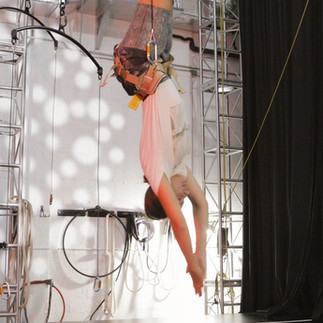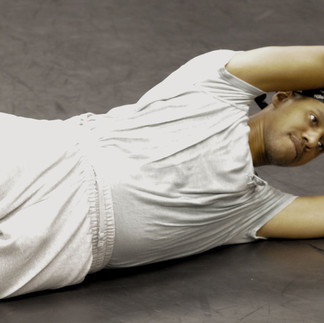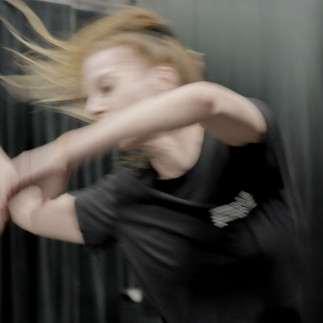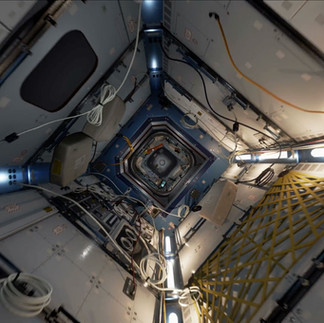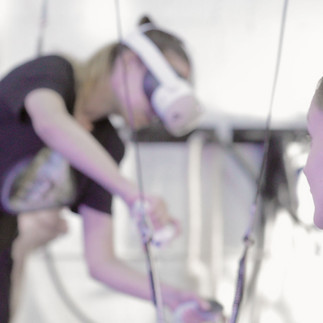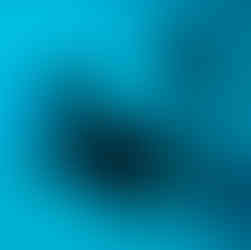Microgravity Performance Training. Lessons from Paraboles: Phase 1
- Natasha Tsakos
- Aug 12
- 8 min read
Updated: Aug 20
We’re Developing a Movement-Based Microgravity Performance Training Vocabulary for Space. Here’s What’s Next and How You Can Join Us.

Hello Explorer,
After going stealth for a month, we are now resurfacing from two weeks of microgravity performance training, guided by Adam Dipert, our Embodied Microgravity Director.
Also known as the Space Juggler, Adam Dipert is a physicist and circus performer who brings unique insights to movement mechanics in free fall. His suite of dance and circus moves for outer space were pioneered through a lifelong flow arts practice, informed by years of math and physics research, and tested aboard multiple Zero-G flights. We were honored to have him join us in Miami.

The experience was intense, centering, purposefully destabilizing. Overall enlightening.
We trained underwater, in float tanks, aerial harnesses, and even traveled to the International Space Station in virtual reality, suspended mid-air, thanks to Vivian Marthell and O Cinema.
Here’s a glimpse into our journey.
★★★★★

The Quiet Work
Perhaps the most unexpected part was the quiet work.
The slow durational and deconstructional approach to movement exploration. The same physical laws we are used to on Earth apply in space, but without gravity’s pull, different forces take over. Movement and perception must be relearned.
We had to master three basics. How to translate: moving our body’s center of mass along a path without rotation. Rotate about stable and unstable body axes. Leverage surfaces, each other and internal torques to initiate movement. The building blocks for developing a performance technique in microgravity.
Why does this matter? Human movement control in microgravity is still being explored. Even astronauts spend significant time learning to orient themselves, move between surfaces, and control motion in this new environment. There is much to understand, test and expand on.
Let's dive in

2. Your Body is a Sensor
Our mornings involved hours of sensing, as though every hair follicle on our skin was awake. Isolating points in the body, visualizing limbic nodes connecting, extremities moving ever so slowly, at times imperceptibly. Surrendering to a continuous stream of conscious motion. What French choreographer and early pioneer of dance in microgravity Kitsou Dubois, describes as “the sensation of infinite movement".

Intentional Forces
We worked with pushing and pulling as the only forces to rely on. We imagined gravitational reference frames shifting from ego-centric (self-oriented) to allocentric (environment-oriented), transferring those frames to our props: apples, suitcases and points in space.

Orient through Rotation
We drilled rotations, isolating arms, isolating legs, isolating arms and legs, then practiced continuous head-tail spins and inversions we jokingly called ‘banana rolls’ (to compensate for the painful earth-bound sensation of blood rushing down our heads as we twisted and twisted and twisted!)
On Earth, flipping upside down sends blood rushing to your head because gravity creates a pressure difference between your head and feet. In space, that difference disappears. Fluids shift toward the head no matter which way you’re oriented. So in microgravity, being “upside down” won’t add extra pooling; the headward fluid shift is there all the time. So long banana rolls!

A Geometric Approach
We approached movement through geometry. The body became an intersection of stable and unstable axes, inhabiting the coronal, sagittal, and transverse planes, with a center of mass that shifts as our limbs, and even our eyes, move, becoming the compass for all intentional motion in space.

Studying Our Heritage in Weightlessness
We watched hours of archival videos, sometimes videos of videos, featuring varying experiments aboard parabolic flights starting in the late 90's.
👁️ Kitsou Dubois’ refined choreographed explorations aboard Air Zero G with the French National Centre for Space Studies (CNES) 👁️ Kathleen McDonagh’s in StarDance, co-authored and choreographed by Jeanne Robinson 👁️ Japan’s Ishiguro Dance Theater’s Weight Less 👁️ Playful glimpses of hookah smokers drifting on flying carpets featured at Kosmica 2012 👁️ Snippets of Dragan Živadinov’s futuristic installation.
Most striking was the discovery of Skylab.
Did you know? Launched in 1973, Skylab was America’s first space station, hosting three crews through 1974. Watching astronauts run, flip and dance in this unusually large module felt like watching bodies move in a bath of freedom. A glimpse into our weightless futures.

Patience Over Impulse
Week one was slow. Our team of seasoned performers is naturally inclined toward play, risk taking, and dynamism. Resisting the urge to anticipate or force choices onto the stillness was hard. We stayed patient and determined, reminded that practice doesn't make perfect, it makes permanent. Slow, correct repetition rewires the neural pathways, enabling precise, intentional movement in environments where gravity no longer grounds us.
When learning a new skill, the embodied understanding is key. Listening to former astronaut Story Musgrave in I'm a Space Person reminded us of that too.

Microgravity in Virtual Reality
We paired harness work with Virtual Reality, and found ourselves inside the International Space Station. Being able to rotate within the sagittal plane while suspended, amplified the illusion of weightlessness and heightened disorientation. For some of us, subtle symptoms of motion sickness kicked in at different times. A well-documented effect of sensory mismatch between the eyes, inner ear, and body in both VR and spaceflight
We put the work into practice: controlled rotations, generating motion with small internal torques, steadying our gaze and breath, and handling objects as we “moved” across modules. Slow and steady.
The most profound moment came upon entering the Cupola: the panoramic window module of the International Space Station, built for Earth observation and spacecraft operations. What a feeling! Even if simulated... the overview effect was felt. The overwhelming awe of discovering our home planet for the first time. Majestic, rare, alone, independent. A world in and of itself, pun intended, we are so very lucky to live on.

Mission: ISS was created in collaboration with NASA, the European Space Agency, and the Canadian Space Agency. This true-to-life simulation lets you explore space and experience the sensation of microgravity in VR.
Train as Though Nothing Will Happen as Planned
Here is the reality: microgravity is unpredictable. We can plan, train and rehearse, still, the key will be to become one with the environment, be ready to improvise when nothing happens as planned, develop our characters’ intentions with profound clarity, and dramaturgically play with the premise of weightlessness, at times perhaps, by breaking it.
In Conclusion to this Weightlessnessness
Slow and control is the wisdom.
Sensing is the state.
Our Center of Mass is the weight that will shape and inform how we will move when gravity no longer anchors us down.
Moving from our center of mass is the thing wherein we'll capture the spaciousness of Paraboles' making.

How to Ready Your Mind and Body for Space?
Challenge your relationship with gravity.
Read a book or watch a show upside down! (as suggested by Story Musgrave. Bonus points if you're solving a math problem, courtesy of Adam Dipert:)
Go swim without swimming
Think: Slow like a sloth, fluid like water, controlled like an archer.
Embody what you learn. Don't memorize information, instead, apply it, feel it, embody it.
Pause and notice where your body moves from. Can you find your center of mass?
Remember you are the amalgamation of trillions of biosensors, so sense!
The next time you are in a float tank: imagine yourself in space and flow.
If you've made it this far: Thank you! If you're really nerding out right now: read Adam Dipert's paper Choreographic techniques for human bodies in weightlessness.
★★★★★
What’s next for Paraboles?


Phase 2 is next: high-fidelity simulation here on Earth. We’ll rehearse inside the environmental conditions of our upcoming parabolic flight, until every move, glance, and interaction is as embodied as breath. Blue Angels precision. Paraboles spirit. Then, we’ll take the leap into real microgravity, aboard the Zero-G.
Approaching each phase of Paraboles with an open and experimental mindset, while preparing with precision, artistic panache and joy is how we move forward.
You Could Be part of Phase 2: Help bring Paraboles to life in weightlessness. Email us.
★★★★★
Thank You
We wouldn't be here without you. You are pioneering a fundamental aspect of human exploration on Earth and for Space. Thank you.
Mission Specialists
Roland Peralta
Jason Fahlstrom
Startracers
Rodrigo Arenas
Kunal Sood
Salim Ismail & Lily Safrani
Adrian Rasekh
Jeremy Green
Verners
Alessandra de Picciotto
Kevin Surace
Ramses Rivero
Catherine de Saugy
Starjets
Robert C. Wolcott, James Mack, Jennifer Adams, Rafael Cubela, Tom Fahlstrom, William Kalush
Lead Patronauts
Justin Bolognino, Mike Cline, Tarell McCraney, Joe Stone, Ada Yung, Ryan Bererton, Ernesto Galan, Arzhang Kamarei, Gavan Woolery, Nicole, Paul and Maribeth Mills, Anthony Chambers, Yuda Saydun, Aubrey Kessler, Brendan Lutz, Jim McCarthy, Srdjan Stupar, Timothy Bloom, Enrique Dillon, Johanna Salazar, David Kwiat, Nicole Soden, Richard Olivieri, Miral Kotb, Damien Gray, Steven Eisenberg, Jessica Sinclair, Randi Berry
Patronauts
Ariel Waldman, Beth Boone, Brendan Ohara, Celeste Landeros, Daniel Bajaroff, Daniel Perez, Diana Lozano, Douglas Roberts, Eddy Davis, Federico Miranda, Giovanny Marin, Henryka Manes, Isaac Castro, Isaac Vazquez, Jim McCulloch, John DiLorenzo, John Gilkey, Jonathan Satchel, Jose Fernandez-Calvo, Joshua Naramore, Kyle Foster, Lily Safrani, Mafalda Barbosa, Mark Fahlstrom, Michael Gabler, Michael Haney, Michael Vergalla, Nick Novakovic, nikola777, Octavio Campos, Ola Ahlvarsson, Pascal Jacquelin, Regina Moore, Rosario B Casas, Sam Ruben, Sefanja Galon, Tanya Bravo, Theodore Edmonds, Theresa Piazza, U Suggs, Violet Tcherkin, Vivian Marthell, William Hector, Natalia Rocamonde
Our Mighty Partners
Kathryn Garcia, Eddy Davis and Live Arts Miami for championing our training facilities
Vivian Marthell and Phaedra Mladenovic at O Cinema for bringing the ISS to our training
Matt Beck at Float8 for sponsoring our transformative float sessions
Milena Straczynski and Hampus Jansson for being our wonderful aerial stewards
Claudine Choquette from Miami Circus Arts Center
Dr. Bianca Gonzalez at All Smiles Dentistry for lightyears of smiles
Jay Orozco at Creative Creative for the head turns
Jorge Parra and Rafael Núñez who tirelessly documented every step of our training
Anna Shaposhnik at ORBES for her propulsive support
RayGun Agency for believing in our mission and opening spacious doors ahead.
Our Esteemed Advisors
Henryk Dabrowski, Theo Edmonds, Mike Staz, Joanna Bloor, Ignacio Krasovitzky, Vivian Marthell, Tanya Bravo, Kathryn Garcia, Beth Boone, Jonathan Satchel, Vivekanand Vimal, Janna Kaplan, Joel Ventura and Yvette Gonzalez.
Our Team, the Floating Tigers
You make every part of this journey joyful, hopeful, and exciting.
Octavio Campos Creative Exploration & Human Readiness Director
Luis Alberto Cuevas Lead Solo, Choreographic Lead, Performance Researcher
Gabija Birina Lead Solo, Performance Researcher
Enrique Villacreses Lead Solo, Performance Researcher & Capture Officer, In-Flight Videographer
Yvette Gonzalez Bioastronautics Officer, Space Advisor
and Adam Dipert Embodied Microgravity Director
Natasha Tsakos, Creator, Artistic Director, Producer, Performance Researcher
Experimentation is the mode.
Perfection, the goal.
Surprise, the game.
Learning, the way.


















